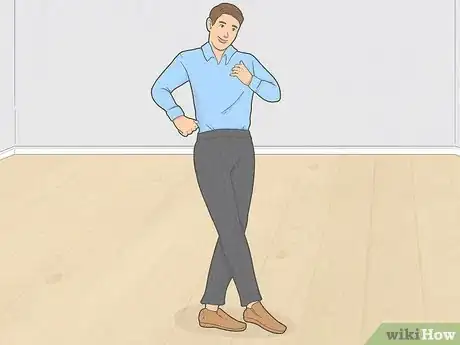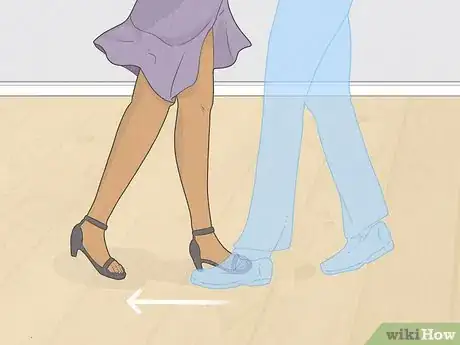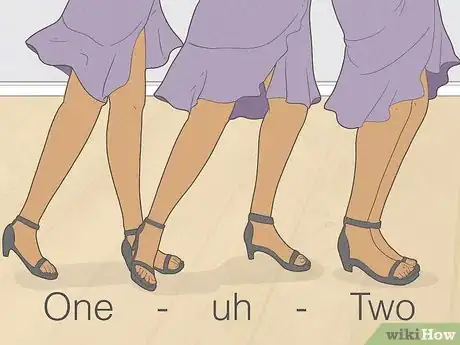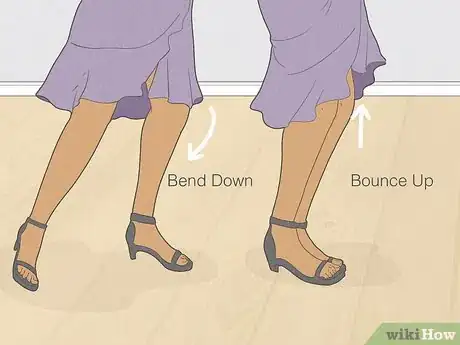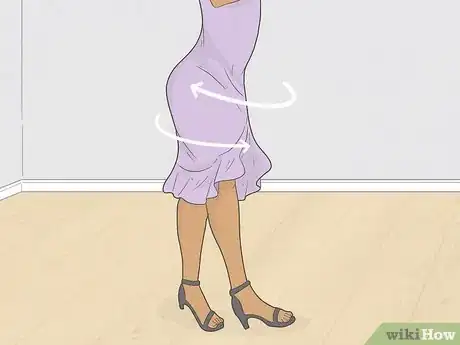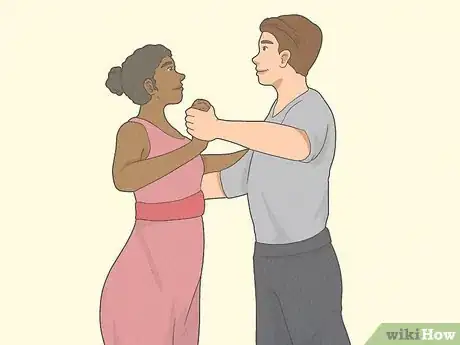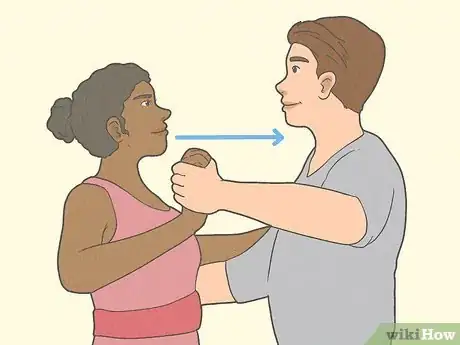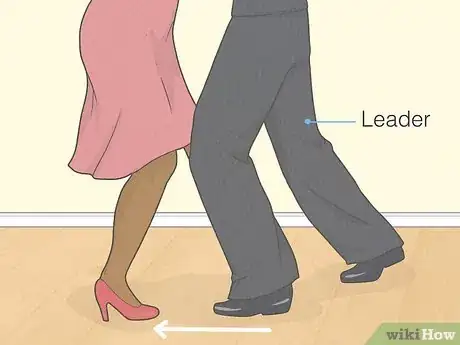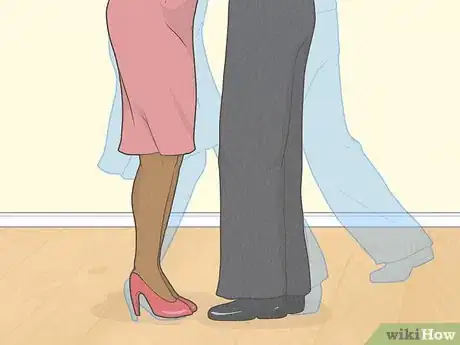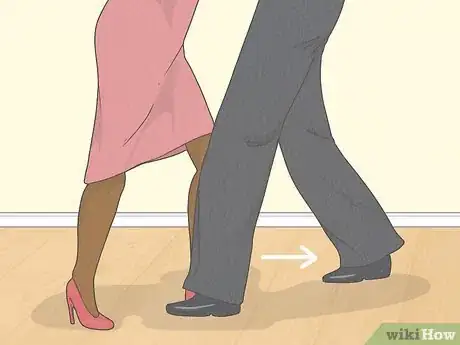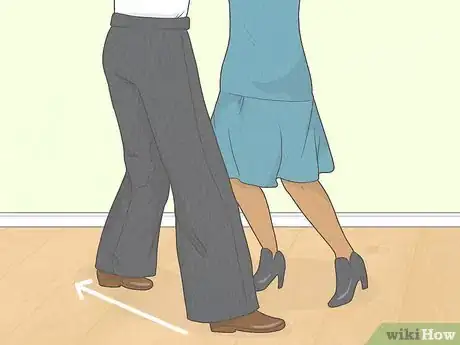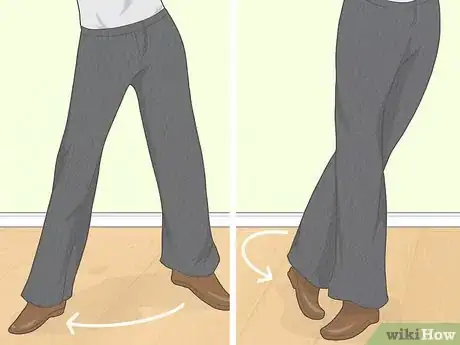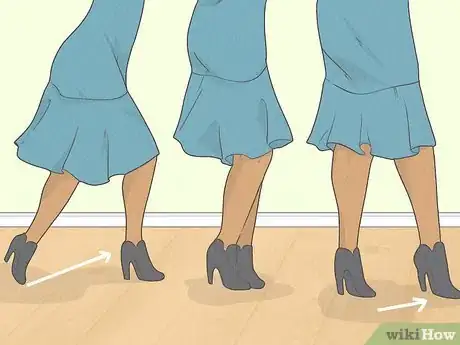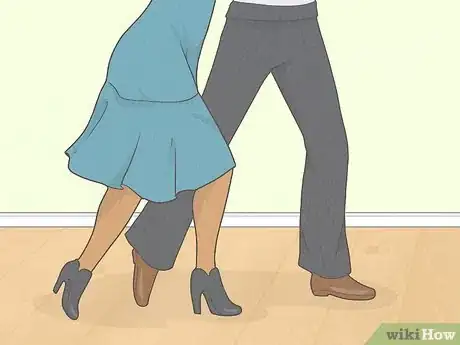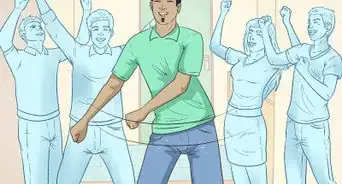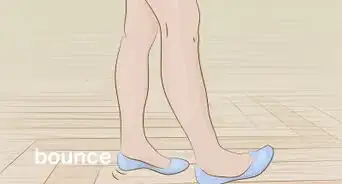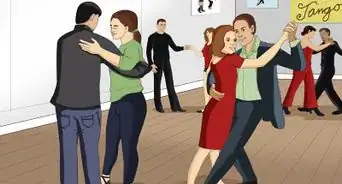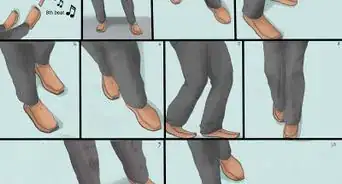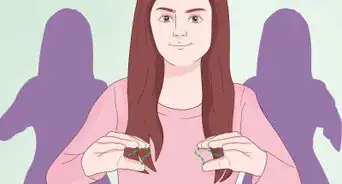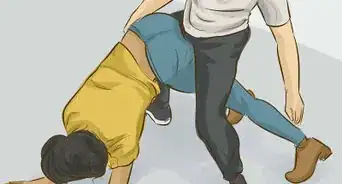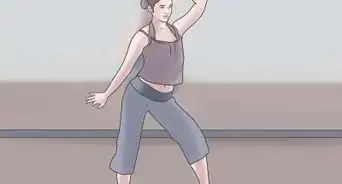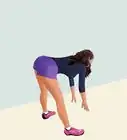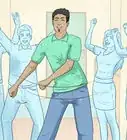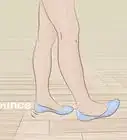This article was co-authored by Andrey Stanev and by wikiHow staff writer, Hannah Madden. Andrey Stanev is a Professional Dance Instructor specializing in ballroom, Latin and wedding dance. With over 25 years of instruction and dancing experience, Andrey is also the Owner of Ballroom Dance in NYC, a studio based in Manhattan, New York and in Hawthorne, New York. He was born and raised in Bulgaria and won the Bulgarian National Championship for Ballroom and Latin Dance in 2000-2001. He has also worked at the Fred Astaire Dance Studio where he received the Award for Outstanding Performance in the advanced department of teaching.
There are 12 references cited in this article, which can be found at the bottom of the page.
This article has been viewed 89,501 times.
Samba is a fun, lively dance that originated in Brazil. It originated as a solo dance, but has since become a flirty and fast-paced partner dance that’s often seen in ballroom dancing.[1] If you’d like to delve into the world of samba dancing, you can dip your feet in by learning the basic movements and dancing with a partner.
Steps
Trying the Basic Steps
-
1Master the leading 6 steps if you are the leading partner. The leading partner in the samba is the one who takes control of the dance to lead their partner around. If you’d like to be the leading partner, practice the 6 basic steps of the samba on your own. The steps are:[2]
- Step forward with your left foot
- Move your right foot to your left foot
- Shift the weight to your left foot
- Step backward with your right foot
- Move your left foot to your right foot
- Keep your right foot in place and shift your weight to it
-
2Practice the mirrored steps if you are the following partner. The other partner in samba does the following steps, or a mirrored version of the leading partner’s. To practice the following steps, try:[3]
- Step backward with your right foot
- Move your left foot to your right foot
- Keep your right foot in place and shift your weight to it
- Step forward with your left foot
- Move your right foot to your left foot
- Keep your left foot in place and shift your weight to it.
Advertisement -
3Count the rhythm with an “uh” in between the beat. The rhythm of samba is a little different from other ballroom dances. As you listen to the beat of the music, count the rhythm as “one-uh-two, three-uh-four, five-uh-six, seven-uh-eight.” This will help you move your body in time to the music as you step.[4]
Did You Know? Most samba music is in 2/4 time, meaning there are 2 beats in each measure.
-
4Bounce up and down as you do the steps. The “samba bounce” adds fluidity and motion to your movements. As you step back and forth, bend your knees slightly and bounce up and down through each step.[5]
- Make sure you bounce on the beat to match your steps.
-
5Sway your hips back and forth as you move your feet. Adding your hips gives your dance a bit of style and attitude. As you dance, rock your hips to the right and left every time you make a step. Not only will this add fluidity, it also gives the samba its flirtatious charm.[6]
- If you’ve never danced the samba before, it can be hard to add in your hips. Try mastering the basic steps first before you add this in.
Dancing with a Partner
-
1Face your partner with one hand on their back. If you are the leading partner, put your right hand high on your partner’s back. If you are a following partner, put your left arm along your partner’s right arm and rest your hand on your partner’s shoulder blade.[7]
- This is also called the “closed” position.[8]
-
2Hold your partner’s free hand with your free hand. Put your free arm up in the air at about shoulder-height and clasp your partner’s hand in yours. Keep your hands held up high above shoulder level the entire time that you’re dancing.[9]
- This will also help you keep your back straight and your head held high.
-
3Look straight ahead over your partner’s right shoulder. Since you and your partner are so close to each other, it can be a little awkward to stare at each other the whole time. Keep your eyes pointed forward over your partner’s shoulder the entire time you’re dancing.[10]
- Think about the saying, "The nose should follow the toes” to keep your head pointed in the direction that your feet are going.
-
4Step on the first count. When you step on each count, the leader and follower will be going through the same steps, but mirrored. When the leader goes forward, the follower will go backwards. When the leader uses the left foot, the follower uses the right foot.[11]
- If you are the leader, take a step forward with your left foot on count 1.
- If you are the follower, take a step backwards with your right foot on count 1.
-
5Bring your other foot in for the ah-2 steps. This next step, on the ah, is a quick step. Step your other foot right beside the one you moved in the previous count. Shift your weight to your other foot, making sure not to put full pressure on this foot. Then, on the 2 count, shift your weight completely back to the first foot. Do this step quickly to put yourself back into the initial, neutral position.[12]
- Your weight will end up back on the foot you led with.
- If you are the leader, you will be stepping your right foot forward beside your left, then shifting partial body weight to the right foot during the ah count.
- If you are the follower, you will be stepping your left foot back beside your right, then shifting partial body weight to the left foot during the ah count.
Tip: Your feet might seem like they are doing a march step as you complete this ah-2 count.
-
6Reverse the steps as you start dancing again. Complete the same sequence of steps to the same count, but this time reverse them. If you’re the leader, go backwards, and if you’re the follower, go forwards.[13]
- If you are the leader, step backward on your right foot, bring your left foot back next to it. Shift your weight quickly to the left on the ah count then back to the right on the 2 count.
- If you are the follower, step forward on your left foot, then bring your right foot forward next to it. Shift part of your weight to the right foot on the ah and then back to the left on the 2 count.
Learning Advanced Moves
-
1Add in a side step from the closed position. If you are the leader, step right on the 1 count and then bring your left foot in. Shift partial weight onto your left foot for the “ah” step. If you are the follower, step left. Then, transfer your weight back onto your leading foot on the 2 count. Finally, step sideways the opposite way.[14]
- You can add in a side step before or after the basic steps to jazz up your routine.
-
2Try the whisk, a variation of the side step. If you are the leader, step to the right on the 1 count. Bring your left foot diagonally close behind your leading foot. On the ah count, transfer some weight back onto your foot diagonally behind your right foot, then the full weight back onto the right foot. If you are the follower, step to the left on the 1 count. Bring your right foot diagonally closer behind your left foot. Shift a small amount of weight onto your right foot on the ah count, then shift back fully onto the left foot.[15]
- When you change directions, you will be stepping with the diagonal, back foot. The step will be a bit wider than in the basic step.
Tip: Remember to keep light weight on the back foot. You are not just pointing the toe, but shifting weight from foot to foot.
-
3Try the stationary samba walk. If you’re the leader, extend your left leg behind you and bring it forward on the 1 count. If you’re the follower, extend your right leg behind you and bring it forward on the 1 count. Step the opposite foot back, with the toe turned out on the ah count. Part of your weight should be in your back foot. On the 2 count, slide your stabilizing, inside foot back about 3 inches (8 cm), placing all your weight back on the stabilizing foot.[16]
- For this walk, hold both of your partner’s hands instead of just one.
- This isn’t a traveling move, so you’ll stay in one place.
-
4Dance the samba walk. Position your bodies slightly away from each other so they’re in an open “V” position. Start with the outside leg diagonal behind your inside, stabilizing leg. Step the back leg forward in front of the inside leg on the 1 count. On the ah count, step the inside leg back, with the toe turned out. For the 2 count, slide the front leg back about 3 inches (8 cm) and transfer all your weight to that leg. Finally, slide the front leg back about 3 inches (8 cm) on the 2 count, then transfer your weight to that leg.[17]
- If you are the leader, you will start by stepping forward with the left leg, then step the right leg back. If you are the follower, you will use the opposite legs.
- You should be travelling a little across the dance floor as you complete this move.
Expert Q&A
-
QuestionHow is the Samba different from other dances?
 Andrey StanevAndrey Stanev is a Professional Dance Instructor specializing in ballroom, Latin and wedding dance. With over 25 years of instruction and dancing experience, Andrey is also the Owner of Ballroom Dance in NYC, a studio based in Manhattan, New York and in Hawthorne, New York. He was born and raised in Bulgaria and won the Bulgarian National Championship for Ballroom and Latin Dance in 2000-2001. He has also worked at the Fred Astaire Dance Studio where he received the Award for Outstanding Performance in the advanced department of teaching.
Andrey StanevAndrey Stanev is a Professional Dance Instructor specializing in ballroom, Latin and wedding dance. With over 25 years of instruction and dancing experience, Andrey is also the Owner of Ballroom Dance in NYC, a studio based in Manhattan, New York and in Hawthorne, New York. He was born and raised in Bulgaria and won the Bulgarian National Championship for Ballroom and Latin Dance in 2000-2001. He has also worked at the Fred Astaire Dance Studio where he received the Award for Outstanding Performance in the advanced department of teaching.
Professional Dance Instructor There are a few differences in technique, but the biggest difference in the Samba is that you can do this dance on your own without a partner.
There are a few differences in technique, but the biggest difference in the Samba is that you can do this dance on your own without a partner. -
QuestionWhat is an enchilada step?
 Community AnswerThe enchilada step is actually called the step dance. You can search for it online.
Community AnswerThe enchilada step is actually called the step dance. You can search for it online.
References
- ↑ Andrey Stanev. Professional Dance Instructor. Expert Interview. 20 May 2020.
- ↑ https://www.dancing4beginners.com/samba/
- ↑ https://www.dancing4beginners.com/samba/
- ↑ https://www.youtube.com/watch?v=CimlZ1Vaqzc&feature=youtu.be&t=36
- ↑ https://www.youtube.com/watch?v=RGN5UJTP-0U&feature=youtu.be&t=137
- ↑ https://www.youtube.com/watch?v=exhSEIia6vk&feature=youtu.be&t=266
- ↑ Andrey Stanev. Professional Dance Instructor. Expert Interview. 20 May 2020.
- ↑ Andrey Stanev. Professional Dance Instructor. Expert Interview. 20 May 2020.
- ↑ https://www.youtube.com/watch?v=CimlZ1Vaqzc&feature=youtu.be&t=32
- ↑ https://www.dancing4beginners.com/samba/
- ↑ http://www.dancing4beginners.com/samba-steps.htm
- ↑ https://www.dancing4beginners.com/samba/
- ↑ https://www.youtube.com/watch?v=CimlZ1Vaqzc&feature=youtu.be&t=40
- ↑ https://www.youtube.com/watch?v=8Q2TmIPGJJM&feature=youtu.be&t=21
- ↑ https://www.youtube.com/watch?v=pHH0CEgBrbU&feature=youtu.be&t=45
- ↑ https://www.youtube.com/watch?v=HQN5ijKwOGg&feature=youtu.be&t=47
- ↑ https://www.youtube.com/watch?v=HQN5ijKwOGg&feature=youtu.be&t=210

